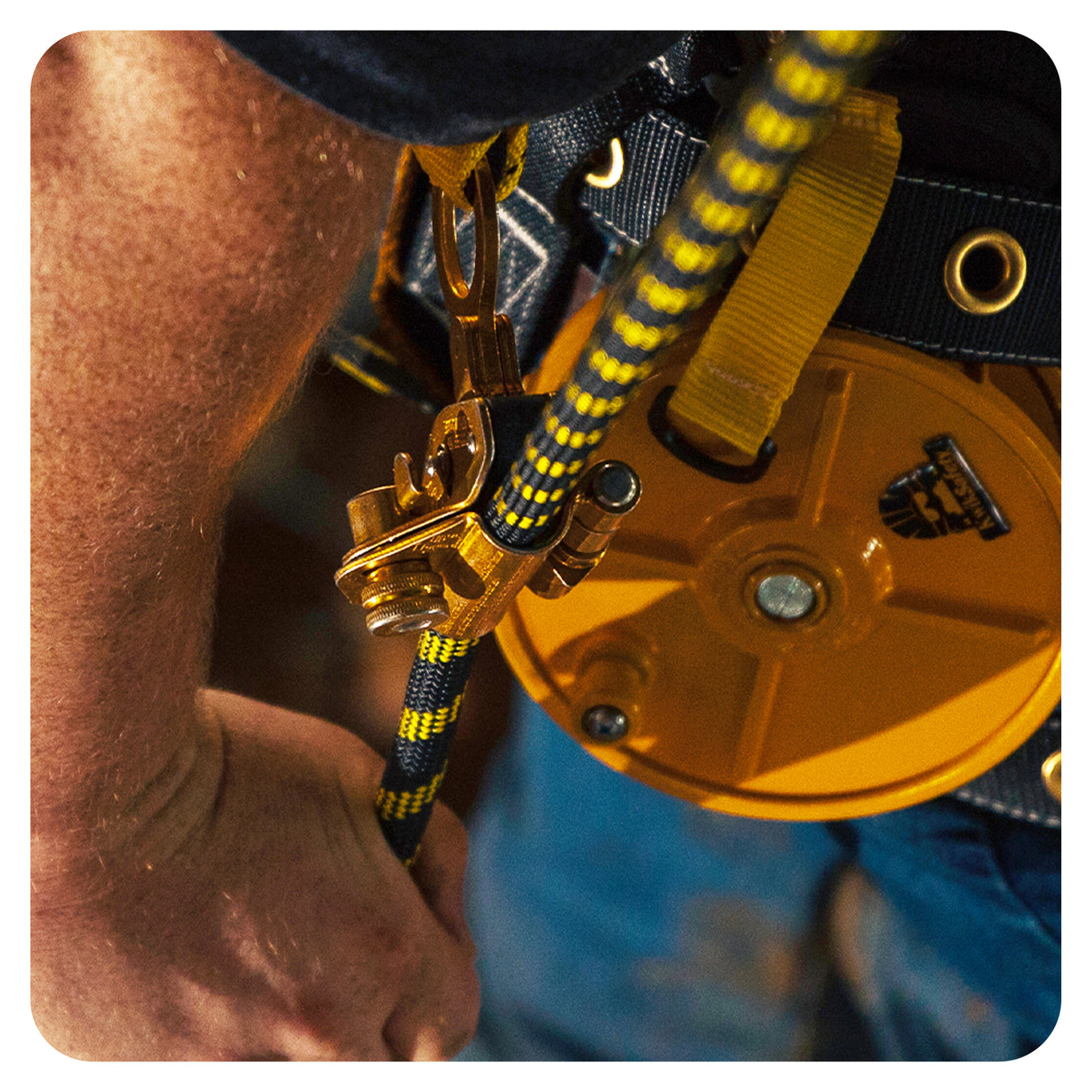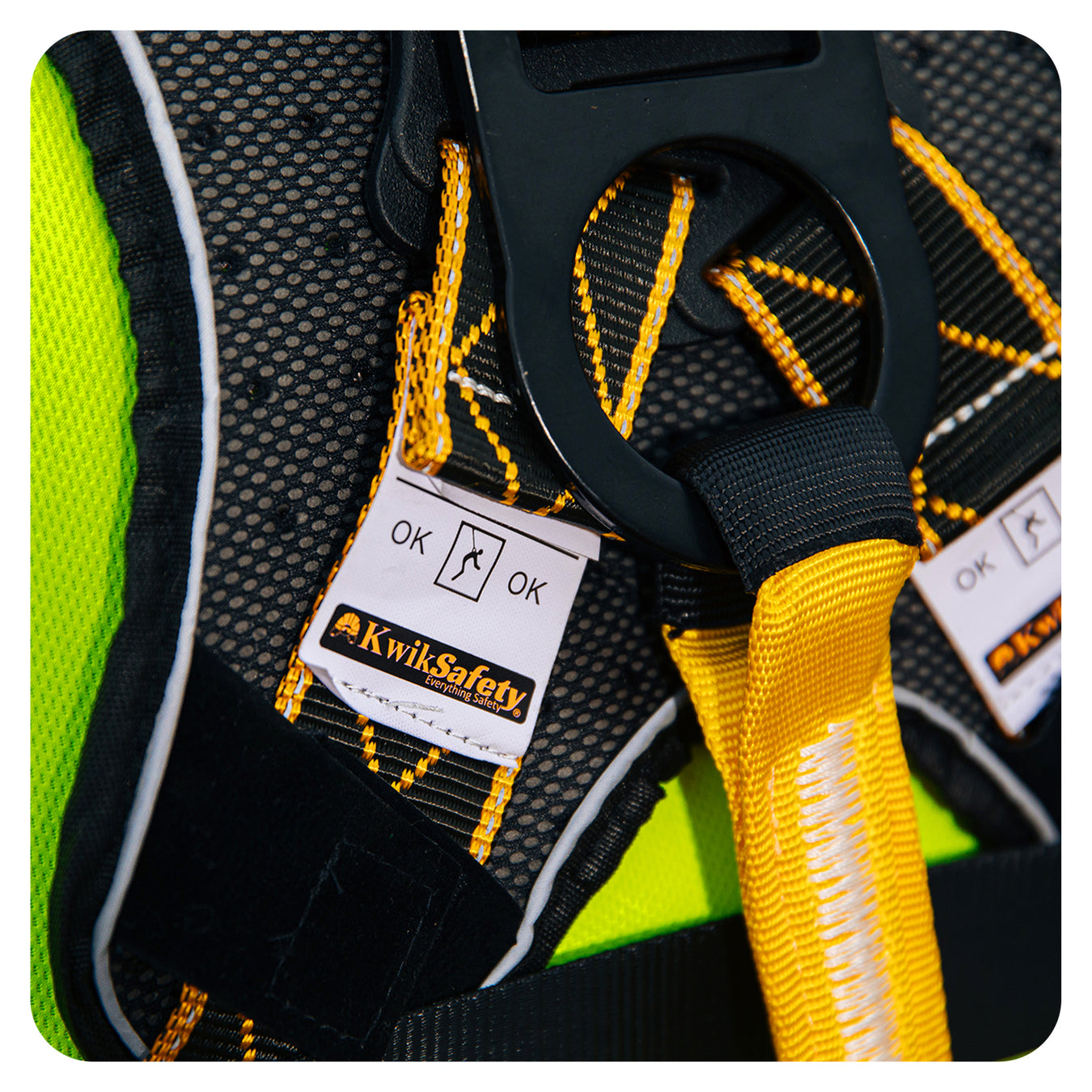Free Shipping | 30 Day Returns | Mix & Match Sitewide
Free Shipping | 30 Day Returns | Mix & Match Sitewide

Product Description LIGHTWEIGHT, DURABLE & CARRYING HANDLE- Heavy and bulky SRLs are a thing of the past with the MAMBA Self Retracting Life...
View full detailsProduct Description NO ENTANGLEMENT & HEAVY-DUTY HOUSING - Never worry about tripping or getting tangled in the KwikSafety COBRA 30FT (Class...
View full detailsProduct Description LIGHTWEIGHT, DURABLE & CARRYING HANDLE- Heavy and bulky SRLs are a thing of the past with the MAMBA Self Retracting Life...
View full detailsProduct Description NO ENTANGLEMENT & HEAVY-DUTY HOUSING - Never worry about tripping or getting tangled in the KwikSafety COBRA 30FT (Class...
View full detailsProduct Description LIGHTWEIGHT, DURABLE & CARRYING HANDLE - Heavy and bulky SRLs are a thing of the past with the MAMBA Self Retracting Lif...
View full detailsProduct Description NO ENTANGLEMENT! - Never worry about tripping or getting tangled in the KwikSafety COBRA 6ft Twin-Leg (Class 1) Self Retraci...
View full detailsProduct Description NO ENTANGLEMENT & HEAVY-DUTY HOUSING - Never worry about tripping or getting tangled in the KwikSafety COBRA 20FT (Class...
View full detailsProduct Description LIGHTWEIGHT & DURABLE | CARRYING HANDLE - Heavy and bulky SRLs are a thing of the past with the miniMAMBA Twin-Leg Self ...
View full detailsProduct Description LIGHTWEIGHT & DURABLE | CARRYING HANDLE - Heavy and bulky SRLs are a thing of the past with the MAMBA Self Retracting Li...
View full detailsProduct Description PREMIUM BRAIDED ROPE (Better Than Twisted Rope!) - Durable vertical lifeline rope/lineas vida made of yellow & black qua...
View full detailsProduct Description NO ENTANGLEMENT! - Never worry about tripping or getting tangled in the KwikSafety COBRA 10ft Single-Leg (Class 1) Self Retr...
View full detailsProduct Description DELUXE DiamondBACK EDITION - The TYPHOON DiamondBACK high-performance full body harness is crafted w/ durable, 100% premium ...
View full detailsProduct Description PREMIUM BRAIDED ROPE (Better Than Twisted Rope!) - Durable vertical lifeline rope/lineas vida made of yellow & black qua...
View full detailsProduct Description NO ENTANGLEMENT! - Never worry about tripping or getting tangled in the KwikSafety COBRA 6ft Single-Leg (Class 1) Self Retra...
View full detailsProduct Description LIGHTWEIGHT & DURABLE | CARRYING HANDLE - Heavy and bulky SRLs are a thing of the past with the miniMAMBA Self Retractin...
View full detailsProduct Description DELUXE DiamondBACK EDITION - The SCORPION DiamondBACK high-performance full body harness is crafted w/ durable, 100%...
View full detailsProduct Description DELUXE DiamondBACK EDITION - The THUNDER DiamondBACK high-performance full body harness is crafted w/ durable, 100% premium ...
View full detailsProduct Description DELUXE DiamondBACK EDITION - The TORNADO DiamondBACK high-performance full body harness is crafted w/ durable, 100% premium ...
View full detailsProduct Description PREMIUM BRAIDED ROPE (Better Than Twisted Rope!) - Durable vertical lifeline rope/lineas vida made of yellow & black qua...
View full detailsProduct Description IP: KwikSafety TYPHOON (iPocket Harness Accessory) Patent No.: US D856,677 S WE DON'T CUT CORNERS ON SAFETY - Our TYPHOON fa...
View full detailsProduct Description PREMIUM BRAIDED ROPE (Better Than Twisted Rope!) - Durable vertical lifeline rope/lineas vida made of yellow & black qua...
View full detailsProduct Description EXTERNAL SHOCK ABSORBER - Our heavy duty, double leg PYTHON safety lanyard is built with a durable polyester webbing that re...
View full detailsProduct Description WE DON'T CUT CORNERS ON SAFETY - Our SUPERCELL fall arrest harness is fully equipped with two (2) hip d-rings, one (1) dorsa...
View full detailsProduct Description WE DON'T CUT CORNERS ON SAFETY - Our HURRICANE fall arrest harness is fully equipped with two (2) hip d-rings & one (1) ...
View full details
Explore our premium collection of fall protection gear, meticulously designed to safeguard workers operating at heights. From full-body safety harnesses and self-retracting lifelines to anchor points and shock-absorbing lanyards, each piece of fall protection equipment is built to exceed strict industry safety standards.
With adjustable features, and durable materials, our fall arrest gear ensures superior comfort and security throughout the workday. Our collection of fall gear and equipment caters to diverse job sites, offering innovative solutions that prioritize safety without sacrificing mobility.
Elevate your safety standards today and experience peace of mind with our premium selection of fall protection kits, roof safety equipment, and much more! No matter the challenges of your demanding work environment, our fall protection ppe is sure to meet and exceed your safety needs!




Fall protection is required in the construction industry when workers are exposed to a fall hazard of 6 feet or more above a lower level. This includes tasks such as roofing, scaffolding, steel erection, leading edge work, and unprotected sides or openings. OSHA mandates the use of proper fall arrest or fall restraint systems to protect against serious injury or death in these high-risk situations.
OSHA requires employers to provide and maintain fall protection systems that meet strength, design, and inspection criteria under 29 CFR 1926 Subpart M and related sections. Equipment must be used at required heights and inspected before each use by the user and periodically by a competent person. Anchorage strength, proper fit, and training are essential to compliance. For a deeper overview, see our guide: What Is the OSHA Standard for Fall Protection?
In general construction, fall protection is required at 6 feet above a lower level. For specific equipment:
For steel erection or scaffolding, different thresholds may apply (e.g., 15 ft or 10 ft). Always refer to job-specific OSHA requirements.
You must use fall protection equipment any time you are exposed to a fall hazard at or above 6 feet in construction or 4 feet in general industry. This includes working on unprotected edges, roofs, ladders, scaffolds, aerial lifts, and while climbing or descending. Employers must assess each jobsite and provide personal fall arrest systems (PFAS), such as harnesses, lanyards, SRLs, and anchors, where necessary to ensure worker safety.
Looking to buy fall protection gear? KwikSafety offers a wide range of ANSI/OSHA-compliant equipment designed for construction, roofing, climbing, and industrial applications. Explore the categories below:
All fall protection gear from KwikSafety is tested to meet or exceed ANSI Z359 and OSHA 1926 standards for on-the-job safety.
The three primary approaches are fall prevention, fall restraint, and fall arrest. Fall prevention removes the hazard or isolates the edge so a fall cannot occur. Fall restraint limits a worker’s travel so they cannot reach the hazard. Fall arrest allows work near the edge but stops a fall in progress within safe forces and distances.
Common systems include full-body harnesses, lanyards, self-retracting lifelines, vertical lifelines with rope grabs, and certified anchors. Guardrails and safety nets are used where personal systems are impractical. Connectors like carabiners, D-rings, and anchor straps tie the system together. Selection depends on the task, height, mobility needs, and site conditions.
Store gear clean and dry in a cool, ventilated area away from direct sunlight, chemicals, and sharp objects. Hang harnesses by the dorsal D-ring to avoid creasing, and keep lanyards and SRLs in protective bags or cases to prevent abrasion. Do not stack heavy items on top of soft goods or compress energy absorbers. Inspect before storage and again before each use to catch damage early.
